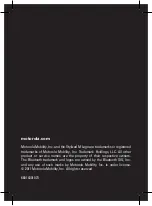
Vintage Keys Operation Manual
153
Preset Edit Menu
Low Frequency Oscillators (LFOs)
Low Frequency
Oscillators (LFOs)
A Low Frequency Oscillator or LFO, is simply a wave that repeats at a slow
speed. Vintage Keys has two LFOs per layer identified on the display as
LFO1 and LFO2.
An LFO can be routed to any real-time control destination using a
PatchCord. LFOs have a myriad of uses, some of which probably haven’t
been thought of yet. The following examples show a few common uses.
•
Control the pitch of the sound (LFO -> Pitch). This effect is called
“vibrato” and is an important performance tool. Many factory presets
use this routing with the modulation wheel controlling “how much”
modulation is applied.
•
Create a “tremolo” effect by routing the LFO to control the volume
(LFO -> AmpVolume).
•
Add a bit of animation to the sound by routing the LFO to control the
filter. Set the PatchCord amount low for a subtle effect.
The LFOs have five parameters: Shape, Sync, Rate, Delay and Variation.
Shape
LFO waveforms have different shapes. The shape of the waveform deter-
mines the effect of the LFO. LFOs have traditionally been used to add
vibrato or repeating movement to a sound. These new shapes offer a lot of
new programming possibilities.
If you modulate the pitch of an instrument, it’s easy to visualize the shape
of the waveform. For example, the sine wave has a smooth, rolling shape
that changes the pitch smoothly. The square waveform changes between
two pitches abruptly. A sawtooth waveform increases the pitch smoothly,
then abruptly changes back down. The available waveforms are shown
below.
L1
LFO1 SHAPE SYNC
sawtooth key sync
















































